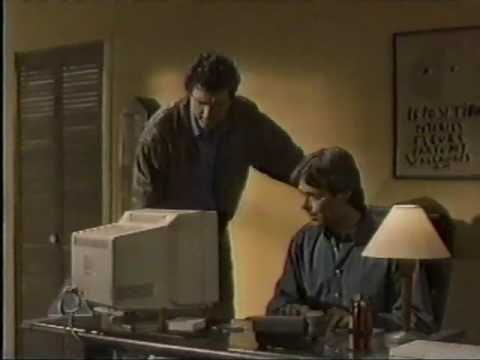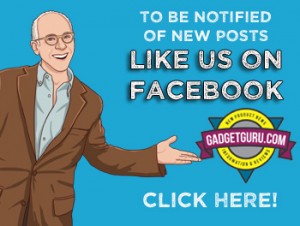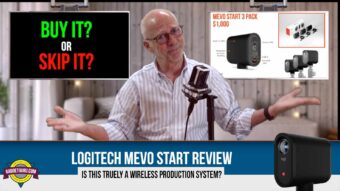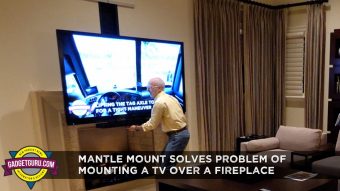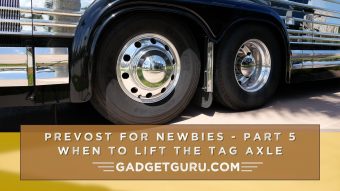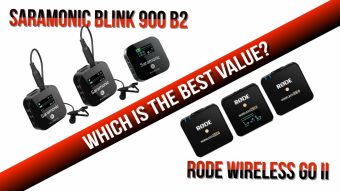In 1995 The Question Was: What Is E-Mail?

20 years ago, I hosted a segment on NBC’s Today Show that answered the question that many were embarrassed to ask: What Is E-Mail? The video of this segment follows this Story behind the Video.

Yes, people were talking about email, (back then it was typed “eMail or E-Mail”), but few knew what it was and how to use it. I thought it might be helpful to understand the background of what was going on in the minds of consumers in 1995 in regards to email…or shall I type, eMail or E-Mail?
Before the days of Microsoft Outlook, Yahoo Mail and Gmail, America Online (AOL) was the dominant force in online services and in the delivery of the electronic message service commonly called eMail.
To set the stage, in 1995 the World Wide Web segment of the Internet was an emerging technology and it was far from being widely adopted. To many, online services such as AOL were considered to be the Internet. Looking back, this service was a simply a stepping stone in teaching people how to access information online and for its time, AOL made it easier than competing services.
Instead of having to type in “http://www. whatever” and learning to say “dot” instead of “period” into a thing called a browser, a user could simply plug a computer into a telephone line, load a free AOL floppy disk in the computer’s drive slot, press install, fill in a few blanks and login through AOL’s user friendly interface. It truly opened a new world of nearly instant information to the masses and became the Killer App that made computers fly off retailer’s shelves.

When AOL would provide a major software update, since the modems of that era were running at what is now considered a snail’s pace, it could take hours or sometimes overnight to install updates as it had to download numerous graphics over the telephone line and then, like assembling a puzzle, the software would have to put those pieces together.
As another point of reference, just prior to AOL consolidating into a single service that served most operating systems, it offered two basic platforms. AOL was designated for Windows computers and its Promenade version was designed for Macintosh operating systems. While the graphics were similar, those of us who were content providers had to upload new stories twice to have it appear on both services.

Apple later marketed it’s own online service, eWorld, which was basically an AOL system with Apple specific interface. As you can see, the goal was to transform what was then DOS-like complicated commands into a point and click experience.

AOL was not the first company to explore this space and this field included CompuServe, Genie, Prodigy and other various bulletin board oriented sites. However, AOL became the dominant factor and it’s success could be due to the fact it blitzed the market with floppy discs that were available almost everywhere. These disks were included in numerous publications, delivered in the mail and available at retail. Personally, I had received so many AOL starter disks that I used them for coasters!
 Installing the disc basically loaded the site’s graphics onto the local computer and when a user connected to the AOL servers via phone line, the text was downloaded and would update and populate the various sections of the site. It was quite an innovative method in its day and I’m sure many remember the famous voice stating, “You’ve Got Mail!” that sounded upon a successful login and if new mail or unread messages were in the users mailbox.
Installing the disc basically loaded the site’s graphics onto the local computer and when a user connected to the AOL servers via phone line, the text was downloaded and would update and populate the various sections of the site. It was quite an innovative method in its day and I’m sure many remember the famous voice stating, “You’ve Got Mail!” that sounded upon a successful login and if new mail or unread messages were in the users mailbox.
At that time AOL offered a few free hours to new users followed by an hourly usage fee. This was later followed by a flat monthly fee. Because it used a telephone line for connection and tied up the line when in use, it was common for many users to get on and off line fairly quickly so they could continue to receive incoming phone calls as well as to keep the usage fees low. AOL’s goal was to keep you engaged and online as long as possible. That’s why the focus on content was important. Looking back this is significant as it ushered-in the days of “pay as you go.”
In my opinion, AOL succeeded as it was much easier to use than competing services and made surfing the site a point and click experience. Compared to CompuServe which utilized complicated numerical email addresses, AOL modernized the concept of using screen names for email and that made it much easier to remember or relay a specific email address and tell others how to contact you online. When sending a message or email to another AOL member, you only had to enter the screen name and not the full email address. This too was a part of its success.
In the mid-1990’s, The Gadget Guru was a significant and exclusive contracted content provider to the technology and new product news areas on AOL (keyword: Gadget) and I had direct contact with various staff members. I had visited the AOL offices on occasion and what I saw surprised me as I had expected this to be a very organized place of business. Simply stated, it wasn’t. After flying across the country for a planned meeting, having the other party actually show up for an appointment was an accomplishment. In my opinion, it was the “inmates running the asylum” type of mentality, but at the time AOL was the 800 lb. gorilla and dominant in its field so they must have been doing something right.
When it came time to do this segment, I worked with my contacts at AOL and they came to the Today Show studio to assist in the setup and to ensure everything was operating properly for this live demonstration. However, as you can see in the video, they forgot to do one thing:
Turn off Instant messaging.
And the results that appeared onscreen were a bit surprising!
Looking back at this video I seem to remember the Producers of the show were not too excited about me doing this segment as some felt it just wasn’t mass appeal enough to warrant a dedicated segment and felt it would work better as a mention in an overview of computers story. As you can see, I did convince them to allow me to do this segment and afterwards, the staff was absolutely blown away with the immediacy that messages appeared on the screen just seconds after revealing Matt Lauer’s email address.
In my own mind this is one of those segments that showed the brass upstairs that email was real and more people were using it than they imagined. It also provided solid proof to the Producers that the demographic of those who watched The Today Show were interested in technology.
A bit of trivia: To my knowledge, The Gadget Guru section on AOL was the first to conduct an online contest with an automobile as the top prize. If memory serves me correctly, the grand prize was a two year lease of an Infiniti and the 2nd prize was a Suzuki motorcycle. While this concept of this contest came up during a phone conversation with the Infiniti PR person, the Suzuki PR Rep assisted greatly in this promotion. At that time, since AOL was charging its users by the minute, they were interested in anything that would keep people using its site for longer periods of time. The drawings were held live in a cyber auditorium during the prime evening usage period. While numerous other prizes were awarded (I believe that Bose, Compaq and others participated), a contest of this magnitude had never been performed on AOL or, to my knowledge, anywhere else online at this time. It was quite an undertaking as AOL offered little assistance and The Gadget Guru staff had the additional tasks of making sure every entry was counted and the contest handled fairly. But just getting the occasional mention on AOL’s home page was enough to send a huge amount of traffic to our section.
As a bonus, here’s an AOL TV commercial from 1995:

